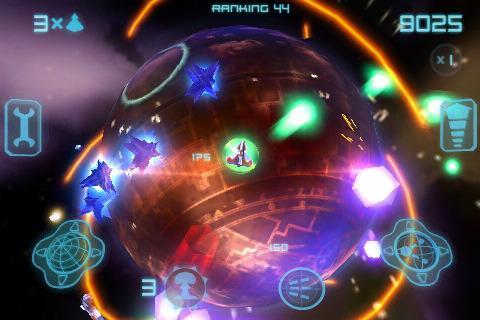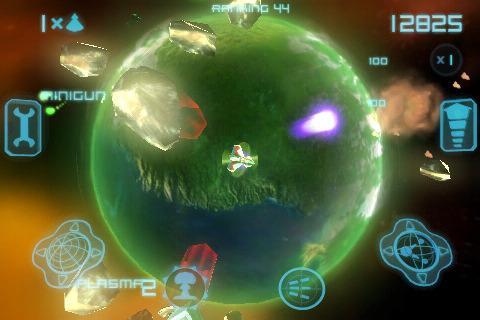- Wondering how to get Monopoly GO! free rolls? Well, you’ve come to the right place. In this guide, we provide you with a bunch of tips and tricks to get some free rolls for the hit new mobile game. We’ll …
Best Roblox Horror Games to Play Right Now – Updated Weekly
By Adele Wilson
Our Best Roblox Horror Games guide features the scariest and most creative experiences to play right now on the platform!The BEST Roblox Games of The Week – Games You Need To Play!
By Sho Roberts
Our feature shares our pick for the Best Roblox Games of the week! With our feature, we guarantee you'll find something new to play!Type Soul Clan Rarity Guide – All Legendary And Common Clans Listed!
By Nathan Ball
Wondering what your odds of rolling a particular Clan are? Wonder no more, with my handy Type Soul Clan Rarity guide.
Crash Course Review
Here’s a design challenge to think about: how do you add a fresh twist to one of the most prolific genres in history, the twin-stick shooter? How many children of Asteroids are there? While Crash Course makes a valiant attempt to crack the code, and largely succeeds, it does so by standing on the shoulders of giants.

A well-executed iPhone homage to an innovative twin-stick arcade shooter.
Here’s a design challenge to think about: how do you add a fresh twist to one of the most prolific genres in history, the twin-stick shooter? How many children of Asteroids are there? While Crash Course makes a valiant attempt to crack the code, and largely succeeds, it does so by standing on the shoulders of giants.
The twist is a ball. The playfield itself is wrapped around a translucent sphere, which in turn encases a small planet. Your starfighter stays fixed in the centre of the screen while the sphere travels “beneath” you. This novel approach offers a number of interesting game situations -for one, you no longer can be “boxed in” to a lethally-constricted corner of the screen. Your ship simply orbits, travelling forever in any direction. It also offers a unique view of the asteroids and enemy aliens you are tasked with eradicating, as it is possible to see incoming threats “over the horizon”, due to the size difference between planet and atmosphere. This spherical field adds an entirely new perspective on how a twin-stick shooter plays, both literally and figuratively.

Of course, “twin-stick” on the iPhone really means “twin-touch”. In this situation you are required to place both thumbs on the lower corners of the screen, rocking the left thumb to move and the right to aim your fire. This approach is obviously an inferior experience to using two actual analog sticks, but works better in practice than it probably has any right to. Certainly some acclimatization is required, and there are drawbacks. Because you need constant input from the game itself as to where your thumbs are registering, it’s very difficult to switch directions quickly. Motions tend to be sweeping, which can lead to some reaction-time problems when the game gets frantic. (Hand cramping was a problem as well, although I found that resting my wrists on a level desk surface helped tremendously.)
Crash Course takes this concept and wraps it in glorious Unity-driven 3D. It certainly doesn’t lack for visual flash in iPhone terms, particularly on iPhone 3GS (which we reviewed with). The game allows the user to adjust the level of detail and post-processing, which is probably necessary for older iPhone models. Keeping the game’s frame rate at an acceptable level is certainly more important than some glow effects. All of this is presented in landscape mode, which was adjustable in the options menu.
Various debris is constantly raining down on you from space, giving scant warning before crushing you. You need to dodge and shoot your way through all of that while alien ships zip around in varying attack patterns. While your gun seems like a sad little pea-shooter initially, collecting power-ups will reward the player with up to three different guns, each of which upgrades over time throughout the game. Switching guns is accomplished with an icon tap, something that can be very tricky when your thumbs are this busy. There is also a boost feature which propels your ship through enemies in a quick burst, as well as a limited-use nuke; again, very handy but also very tricky accurately tap in a pinch. There are five waves to each planet, and five planets in all, offering a wide variety of enemy variants to keep you occupied. The inevitable boss-ship at the end of each level is a bit tired, deploying the old standby bullet-storm in timed pulses. Online high score lists let you compare with others, and your worldwide ranking is constantly displayed at the top of the screen when connected.

This is the point in the review where the readers who have played Super Stardust HD on the PlayStation 3 are thinking to themselves, “this sounds awfully familiar…”
All of this innovative gameplay -the sphere field, boost mechanic, three switchable weapons, is all more-or-less a direct rip from Super Stardust HD. And I do mean direct. Not only is the presentation style nigh-identical, but the music, the level structure, the style of power-ups: the same. The red warning indicators for the asteroids are the same. The font is the same.
This seemingly shameless pilferage gave this reviewer some pause initially. Because here is the thing: if Housemarque themselves, developers of SSHD, had released this game and called it Super Stardust for iPhone, I would have believed it, so faithful is this “port”. Given the natural constraints of iPhone horsepower versus that of a PS3, this is what we could ever reasonably expect from a mobile incarnation. Super Stardust HD is really, really good. And Crash Course is an expertly realized version of it on iPhone.
The game also offers an iPhone first – anaglyph 3D presentation. If you happen to have a pair of red and blue 3D glasses kicking around, you’ll be able to experience Crash Course in true 3D. While I didn’t have a pair to test this aspect of the game myself, I’m happy to report that the comments about this feature on iTunes have been largely positive.
So if you like twin-stick shooters, I say pick it up and let the lawyers worry about any copyright concerns.

The good

The bad
More articles...
Monopoly GO! Free Rolls – Links For Free Dice
By Glen Fox
Wondering how to get Monopoly GO! free rolls? Well, you’ve come to the right place. In this guide, we provide you with a bunch of tips and tricks to get some free rolls for the hit new mobile game. We’ll …Best Roblox Horror Games to Play Right Now – Updated Weekly
By Adele Wilson
Our Best Roblox Horror Games guide features the scariest and most creative experiences to play right now on the platform!The BEST Roblox Games of The Week – Games You Need To Play!
By Sho Roberts
Our feature shares our pick for the Best Roblox Games of the week! With our feature, we guarantee you'll find something new to play!Type Soul Clan Rarity Guide – All Legendary And Common Clans Listed!
By Nathan Ball
Wondering what your odds of rolling a particular Clan are? Wonder no more, with my handy Type Soul Clan Rarity guide.







